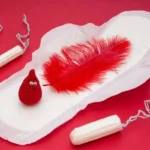Advertisement
Entering adolescence is an exciting time, but it also comes with its own set of challenges. For many teens, one of these challenges is learning how to manage menstruation. The first period is a significant milestone that often brings with it a mix of emotions, from excitement to apprehension. Understanding the various period supplies available can make this transition smoother and more empowering.
This guide will provide teens and their caregivers with detailed information about tampons, pads, and other period supplies, including how to choose the right products, how to use them safely, and how to manage periods with confidence. Whether you’re a teen looking for answers or a parent seeking to support your child, this comprehensive guide will cover everything you need to know.
Understanding Menstruation: What Happens During Your Period?
Before diving into the specifics of period supplies, it’s important to understand what menstruation is and what happens during your period. Menstruation, often referred to as a period, is a natural part of the female reproductive cycle. It typically begins between the ages of 9 and 16 and continues until menopause, usually around age 50.
The Menstrual Cycle
The menstrual cycle is a series of hormonal changes that prepare the body for pregnancy. It typically lasts about 28 days, although cycles can range from 21 to 35 days. The cycle is divided into four phases:
- Menstrual Phase: This is when menstruation occurs, typically lasting 3 to 7 days. During this phase, the lining of the uterus (endometrium) sheds and exits the body through the vagina, along with blood and mucus.
- Follicular Phase: This phase begins on the first day of menstruation and continues until ovulation. The pituitary gland releases follicle-stimulating hormone (FSH), which stimulates the growth of ovarian follicles. Each follicle contains an egg, and one will mature for ovulation.
- Ovulation Phase: Around the middle of the cycle, the mature egg is released from the ovary and travels down the fallopian tube, where it may be fertilized by sperm.
- Luteal Phase: After ovulation, the empty follicle forms a structure called the corpus luteum, which produces progesterone to prepare the uterus for a possible pregnancy. If the egg is not fertilized, the corpus luteum breaks down, hormone levels drop, and the menstrual phase begins again.
What to Expect During Your Period
During your period, you may experience various symptoms, including:
- Bleeding: The most obvious sign of menstruation is the flow of blood from the vagina. The amount of blood loss varies from person to person, but it typically ranges from 30 to 80 milliliters (about 2 to 5 tablespoons) over the course of the period.
- Cramps: Many people experience menstrual cramps, which are caused by the uterus contracting to help shed its lining. Cramps can range from mild to severe and are usually felt in the lower abdomen or lower back.
- Bloating: Hormonal changes can cause your body to retain water, leading to a feeling of fullness or bloating.
- Mood Changes: Fluctuations in hormones can also affect your mood, leading to irritability, sadness, or anxiety.
- Fatigue: The hormonal changes and physical symptoms of menstruation can cause you to feel more tired than usual.










